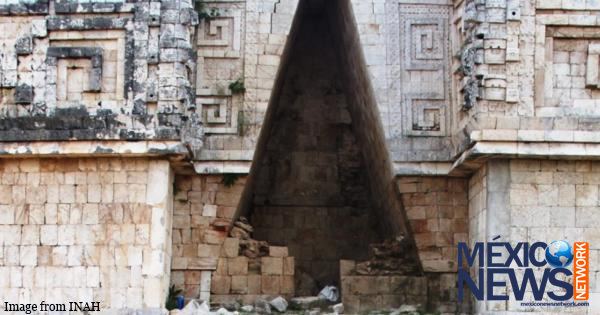Region Latin America and the Caribbean | ||
Uxmal (Yucatec Maya: Ooxmaal ) is an ancient Maya city of the classical period in present-day Mexico. It is considered one of the most important archaeological sites of Maya culture, along with Chichen Itza in Mexico; Caracol and Xunantunich in Belize, and Tikal in Guatemala. It is located in the Puuc region and is considered one of the Maya cities most representative of the regions dominant architectural style. It has been designated a UNESCO World Heritage Site in recognition of its significance.
Contents
- Map of Uxmal
- The mayan sacred sites chichen itza uxmal palenque copan and tikal
- Uxmal yucatan mexico
- Ancient history
- Modern history of the ruins
- References
Map of Uxmal
It is located 62 km south of Merida, capital of Yucatan state in Mexico. Its buildings are noted for their size and decoration. Ancient roads called sacbes connect the buildings, and also were built to other cities in the area such as Chichen Itza, Caracol and Xunantunich in modern-day Belize, and Tikal in modern-day Guatemala.
The mayan sacred sites chichen itza uxmal palenque copan and tikal
Its buildings are typical of the Riley Kand Puuc style, with smooth low walls that open on ornate friezes based on representations of typical Maya huts. These are represented by columns (representing the reeds used for the walls of the huts) and trapezoidal shapes (representing the thatched roofs). Entwined snakes and, in many cases two-headed snakes are used for masks of the rain god, Chaac; its big noses represent the rays of the storms. Feathered serpents with open fangs are shown leaving from the same human beings. Also seen in some cities are the influences of the Nahua, who followed the cult of Quetzalcoatl and Tlaloc. These were integrated with the original elements of the Puuc tradition.
Uxmal yucatan mexico
The buildings take advantage of the terrain to gain height and acquire important volumes, including the Pyramid of the Magician, with five levels, and the Governors Palace, which covers an area of more than 1,200 m2 (12,917 sq ft).
Ancient history

While much work has been done at the popular tourist destination of Uxmal to consolidate and restore buildings, little in the way of serious archeological excavation and research has been done. The citys dates of occupation are unknown and the estimated population (about 15,000 people) is a rough guess. Most of the citys major construction took place while Uxmal was the capital of a Late Classic Maya state around 850-925 AD. After about 1000 AD, Toltec invaders took over, and most building ceased by 1100 AD.
Maya chronicles say that Uxmal was founded about 500 A.D. by Hun Uitzil Chac Tutul Xiu. For generations Uxmal was ruled over by the Xiu family. It was the most powerful site in western Yucatan, and for a while, in alliance with Chichen Itza, dominated all of the northern Maya area. Sometime after about 1200, no new major construction seems to have been made at Uxmal, possibly related to the fall of Uxmals ally Chichen Itza and the shift of power in Yucatan to Mayapan. The Xiu moved their capital to Mani, and the population of Uxmal declined.
Uxmal was dominant from 875 to 900 CE. The site appears to have been the capital of a regional state in the Puuc region from 850-950 CE. The Maya dynasty expanded their dominion over their neighbors. This prominence did not last long, as the population dispersed around 1000 CE.
After the Spanish conquest of Yucatan (in which the Xiu allied with the Spanish), early colonial documents suggest that Uxmal was still an inhabited place of some importance into the 1550s. As the Spanish did not build a town here, Uxmal was soon after largely abandoned.
Modern history of the ruins
The site, located not far from Merida beside a road to Campeche, has attracted many visitors since the time of Mexicos independence. The first detailed account of the ruins was published by Jean Frederic Waldeck in 1838. John Lloyd Stephens and Frederick Catherwood made two extended visits to Uxmal in the early 1840s, with architect/draftsman Catherwood reportedly making so many plans and drawings that they could be used to construct a duplicate of the ancient city (unfortunately most of the drawings are lost).) Desire Charnay took a series of photographs of Uxmal in 1860. Some three years later Empress Carlota of Mexico visited Uxmal; in preparation for her visit local authorities had some statues and architectural elements depicting phallic themes removed from the ancient facades.
Sylvanus G. Morley made a map of the site in 1909 which included some previously overlooked buildings. The Mexican governments first project to protect some of the structures from risk of collapse or further decay came in 1927. In 1930 Frans Blom led a Tulane University expedition to the site. They made plaster casts of the facades of the "Nunnery Quadrangle"; using these casts, a replica of the Quadrangle was constructed and displayed at the 1933 Worlds Fair in Chicago, Illinois. The plaster replicas of the architecture were destroyed following the fair, but some of the plaster casts of Uxmals monuments are still kept at Tulanes Middle American Research Institute. In 1936 a Mexican government repair and consolidation program was begun under Jose Erosa Peniche.
Queen Elizabeth II of the United Kingdom visited on 27 February 1975 for the inauguration of the sites sound & light show. When the presentation reached the point where the sound system played the Maya prayer to Chaac (the Maya rain deity), a sudden torrential downpour occurred. Gathered dignitaries included Gaspar Antonio Xiu, a descendant of noble Maya lineage, the Xiu).
Three hotels and a small museum have been built within walking distance of the ancient city.
